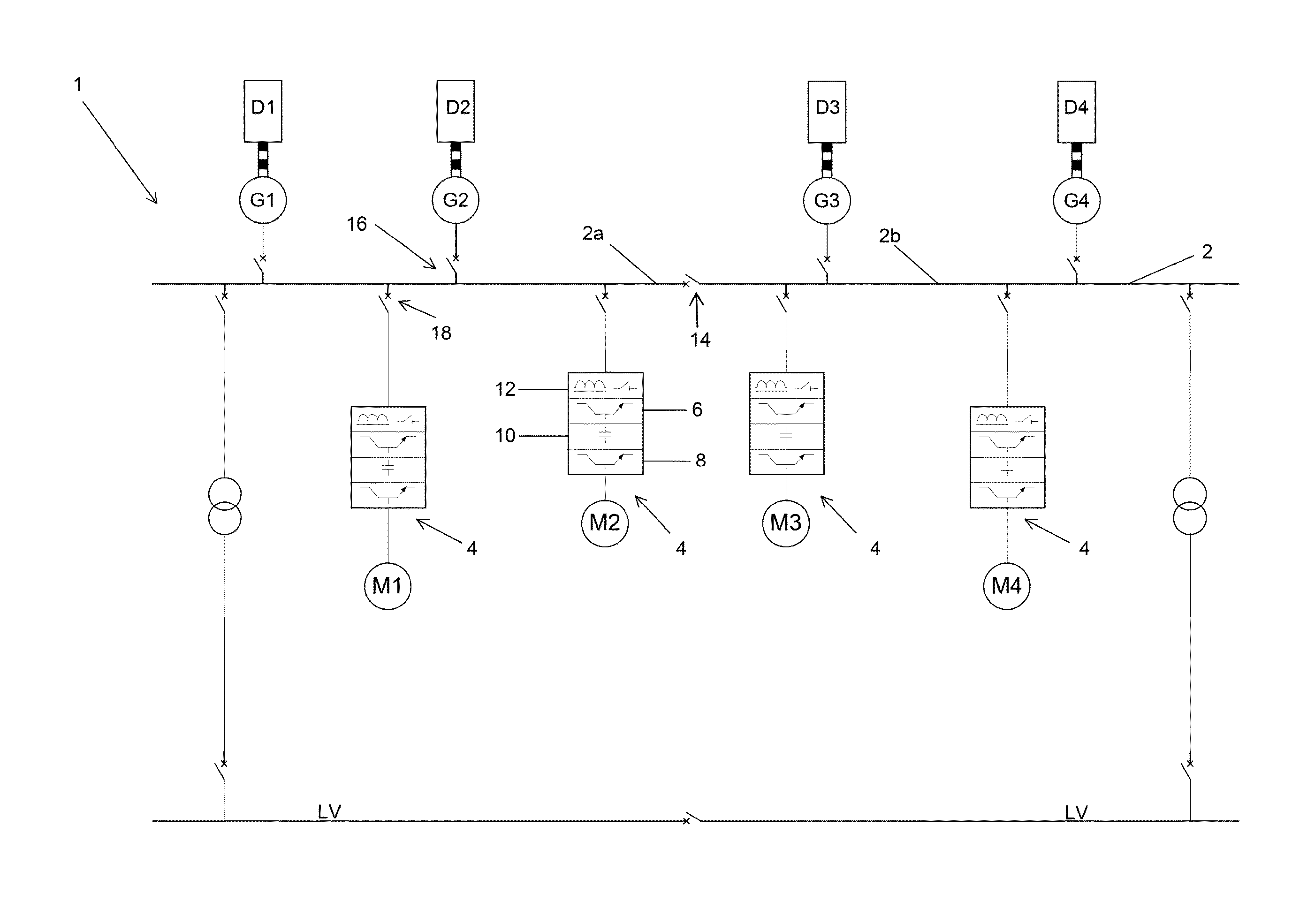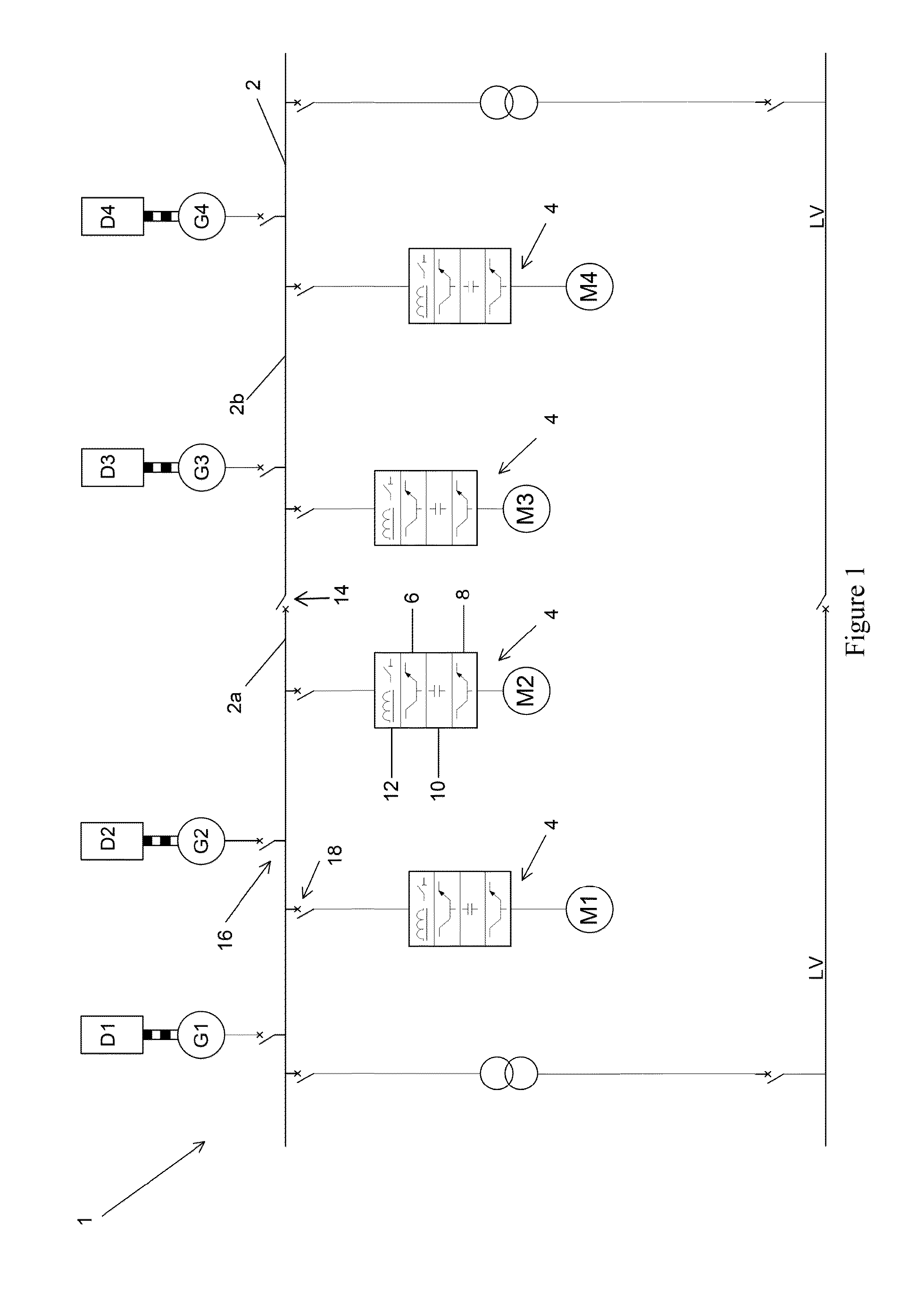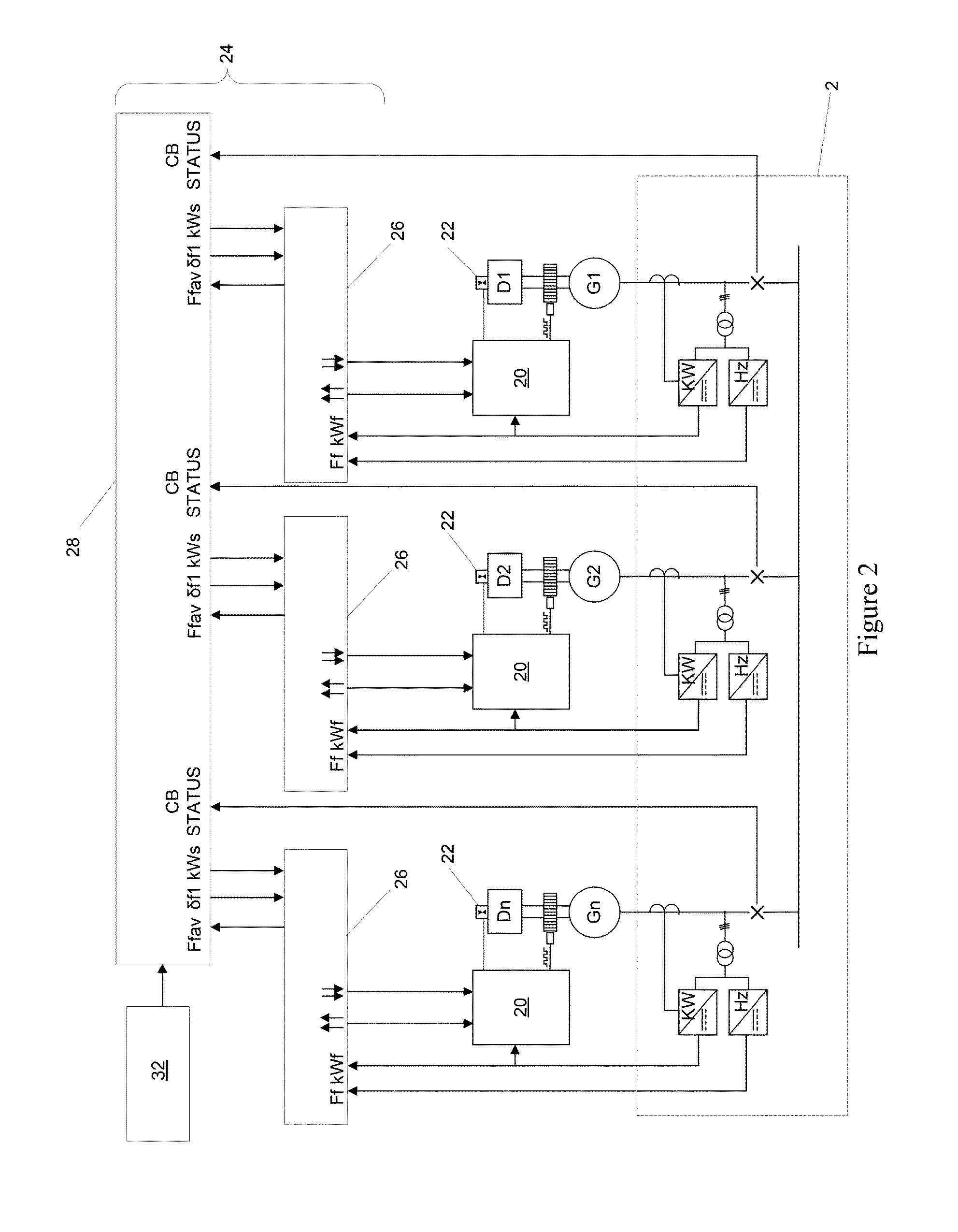Power distribution systems
a power distribution system and power distribution technology, applied in the direction of electric generator control, vessel construction, marine propulsion, etc., can solve the problems of reducing the overall efficiency of the power distribution system, reducing the operational efficiency of the on-line generator, and most likely the overload of the generator, so as to achieve stable reactive load sharing
- Summary
- Abstract
- Description
- Claims
- Application Information
AI Technical Summary
Benefits of technology
Problems solved by technology
Method used
Image
Examples
Embodiment Construction
[0083]A marine power distribution and propulsion system 100 according to the present invention is shown in FIG. 8. Although the following description concentrates on systems for marine vessels, it will be readily appreciated that other power distribution systems can be implemented in a similar manner.
[0084]The overall marine power distribution and propulsion system 100 is similar to the one shown in FIG. 1 and it will be understood that any suitable number and type of ac generators, propulsion motors etc. can be used. Like components have been given the same labels or reference numerals.
[0085]A plurality of ac generators G1 . . . G4 provide ac power to a busbar 52 which carries a variable-frequency distribution voltage (e.g. 690 V but other system voltages can be used). The generators G1 . . . G4 are associated with diesel engines D1 . . . D4 but other types of prime mover can be used.
[0086]Electric propulsion motors M1 . . . M4 are connected to the busbar 52 by means of interposing...
PUM
 Login to View More
Login to View More Abstract
Description
Claims
Application Information
 Login to View More
Login to View More - R&D
- Intellectual Property
- Life Sciences
- Materials
- Tech Scout
- Unparalleled Data Quality
- Higher Quality Content
- 60% Fewer Hallucinations
Browse by: Latest US Patents, China's latest patents, Technical Efficacy Thesaurus, Application Domain, Technology Topic, Popular Technical Reports.
© 2025 PatSnap. All rights reserved.Legal|Privacy policy|Modern Slavery Act Transparency Statement|Sitemap|About US| Contact US: help@patsnap.com



